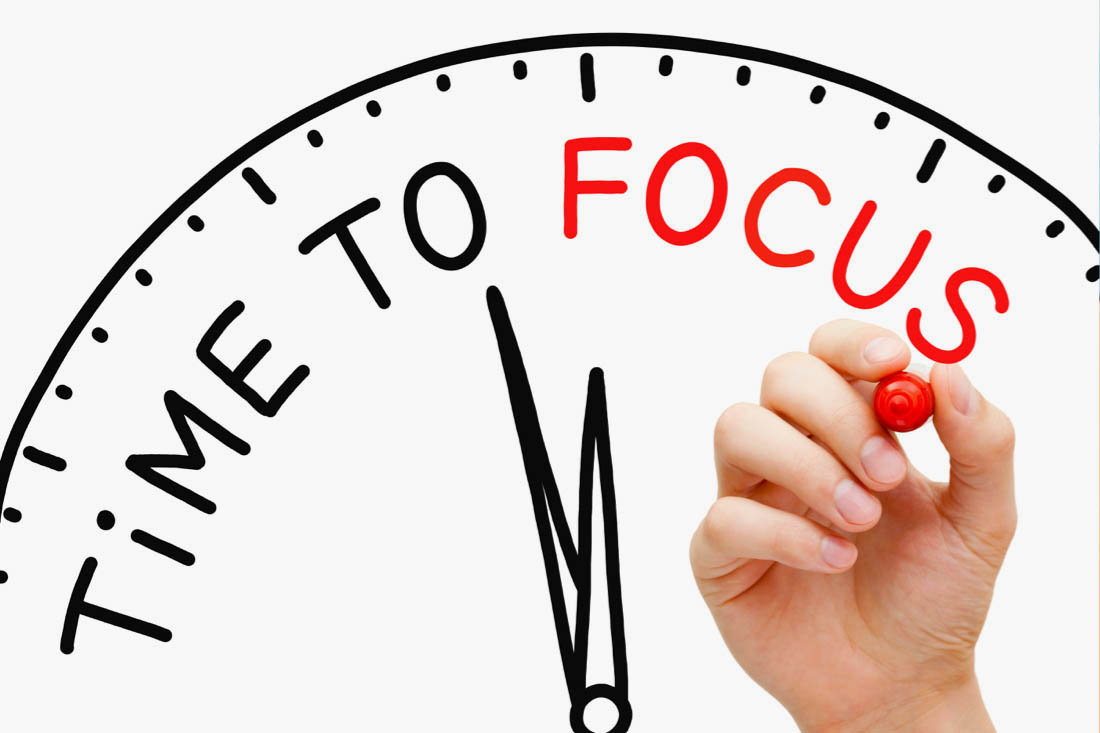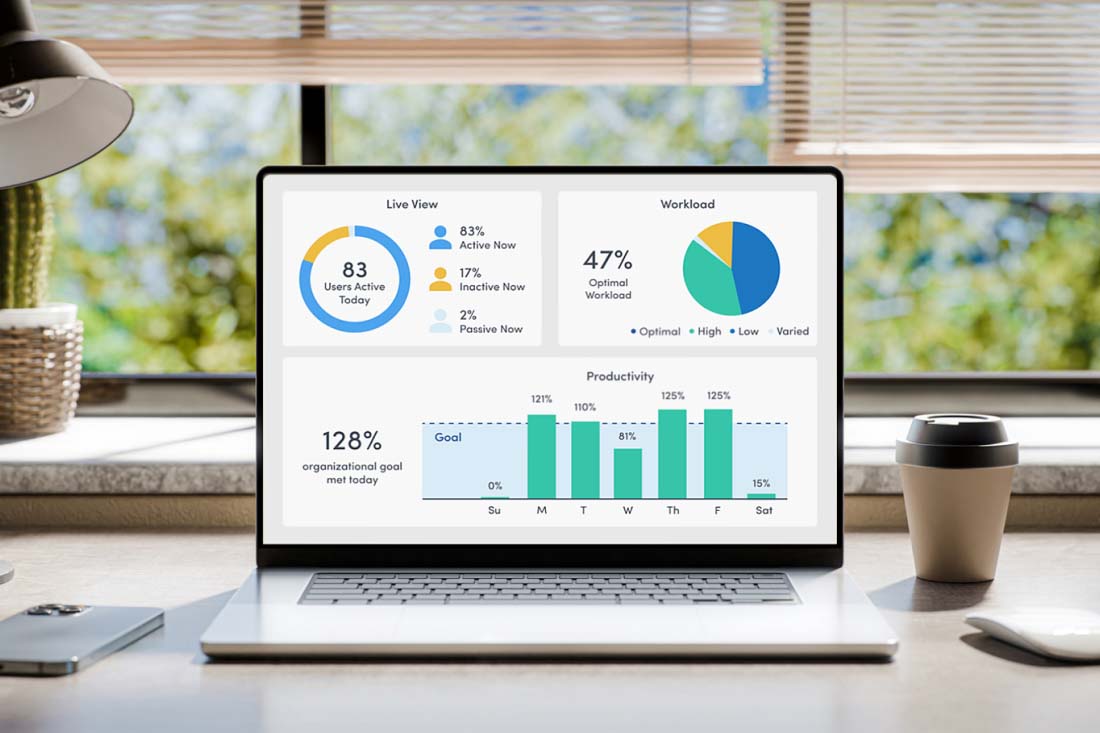With today’s never-ending stream of pings and notifications — not to mention the steady diet of meetings most knowledge workers are on — the concept of focus time may sound like a pipe dream. In reality, it’s critical to success.
If you constantly struggle to stay on task, meet deadlines and accomplish goals, this post is for you. We’ll take an in-depth look at focus time and show you how to make it work for you and your team.
What is focus time?
Focus time is a dedicated block of uninterrupted time that allows you to concentrate solely on one task or project, allowing for deep work and heightened productivity. Whether it’s a time block of 30 minutes or three hours, this designated period is 100% distraction-free — no phone calls, chats, emails or social media allowed.
In a world filled with constant interruptions and multitasking, focus time is a valuable resource that can greatly enhance performance and output.
Focus time statistics
Distractions and disruptions are the biggest enemies of focus time. And unfortunately, they’re also a prominent part of the modern workday. For example:
- The amount of time employees devote to Microsoft Teams meetings and calls increased a whopping 192% in just three years. The heaviest users spend close to eight hours each week — the equivalent of an entire workday — in online meetings alone.
- At companies that use Slack, 62% of users spend over 3 hours a day in the app. An estimated 18% use Slack more than seven hours a day.
- The average worker devotes more than 2.5 hours a day to social media.
- Knowledge workers devote 41% of their time, on average, to low-value tasks that could be competently handled by others.
The importance of focus time
The value of focus time is often understated. Research shows that constant distractions significantly impair cognitive function and limit productivity. According to a report published in the National Library of Medicine, interruptions cause anxiety, increase stress and lead to errors. Even worse, something as simple as an unexpected phone call can greatly extend the amount of time it takes to complete the original task it interrupted — or cause you to forget about it altogether.
Incorporating focus time into your daily routine is the best way to combat these problems. By allocating specific periods to concentrate on specific tasks, you’ll not only carry the job through to completion but also increase the quality of work.
The impact of focus time on productivity
In his book Deep Work: Rules for Focused Success in a Distracted World, productivity expert Cal Newport describes how focusing on a single task while avoiding distractions strengthens the very neurons your brain needs to concentrate.
Focused work is so important, it empowers people to get more work done in less time.
When Newport interviewed 50 “ultra-high-scoring college graduates” from the country’s most competitive schools, he discovered an interesting trend: The highest-performing students studied less, and spent less time writing essays, than the group below them. They simply eliminated distractions to stay hyper-focused.
In contrast, workplace studies have found that employees switch between tasks and projects so frequently it’s often impossible to get anything done. Even a seconds-long interruption can do a lot of damage. While 82% of interrupted work is resumed on the same day, it takes an average of 23 minutes and 15 seconds to get back on task.
Focused work is the only proven way to change these trends. By giving your undivided attention to a single project, you’ll accomplish goals faster and with better results.
Benefits of increasing focus time
Does focus time actually work? Absolutely. By giving yourself permission to disengage from the constant flow of alerts, chats, emails and meetings, you’ll experience immediate benefits.
- More productivity. As described above, engaging in deep work allows you to get more done. It means more time to fine-tune and perfect the project at hand, and to pursue personal interests outside work to recharge and refuel.
- Lower risk of burnout. Devoting more of your workday to important tasks prevents the need for overtime and extra hours. When you schedule focus time, you’re taking steps toward better work-life balance and wellbeing.
- Greater satisfaction. While busywork and meetings might give the illusion of productivity, they won’t make much of a dent in your to-do list. Focused work, on the other hand, increases your capacity. The result is a true sense of accomplishment and greater enjoyment at work.
How does focus time work?
In general, there are two categories of work:
Shallow work is when you complete necessary, but non-demanding, tasks. Sending short emails and scheduling meetings are examples of shallow work. Most of these tasks can be performed while multitasking or distracted without significant impact.
Deep work is when you focus on cognitively demanding work that can only be accomplished in distraction-free environments. The goal of deep work is to challenge yourself to think critically and push your brainpower to its max.
Focus time is devoted to deep work, but it doesn’t make up your entire day. Most people are capable of four to five hours of deep work, usually with short shallow work sessions mixed in.
Examples of focus time in action
Focus time and shallow time both play important roles in the typical workday. The key is to structure each time with intention. For example, effective time management for a sales, marketing, engineering or product development employee might look something like this:
Start with a two-hour deep work session. Behavioral scientist Dan Ariely says we all have a two-hour window when we’re most productive — and it’s first thing in the morning. Here’s what he had to say about the subject in his popular Reddit discussion:
“One of the saddest mistakes in time management is the propensity of people to spend the two most productive hours of their day on things that don’t require high cognitive capacity. If we could salvage those precious hours, most of us would be much more successful in accomplishing what we truly want.”
How can you apply this to focus time? Start by blocking off your calendar so no one can schedule a last-minute meeting. Set an “away” message to let team members know you’ll be unavailable for two hours. Then commit to the task at hand, whether it’s writing a blog post, building a report or preparing for a presentation. Don’t allow yourself to check email, open Slack or look at social media until you’ve either reached your milestone for the day or time is up — whichever comes first.
After you’re done, take a break for distractions. This is the time to check email, open Slack, revisit Teams and check your to-do list. These less-demanding jobs provide a break for your brain while still allowing you to get things done. More importantly, since you already completed two hours of focused work, they’re not taking you off task. Just be sure to set a cap at how long you’ll stay in the shallow work state — 25 minutes to an hour is usually a good amount — before diving into your next deep work session or attending a meeting.
Structuring your deep work and shallow work sessions for specific times, rather than continually multitasking, leads to a greater sense of accomplishment. The deep work lets you make progress toward big goals, while easier tasks provide the small wins you need to stay motivated. In one analysis of 238 knowledge workers, researchers found the simple act of making progress on daily tasks ignites joy, engagement and creativity at work.
How to track focus time
Tracking focus time is essential to gauge progress and improve your ability to concentrate for extended periods. There are two ways to do this.
Traditional methods for tracking focus time
The simplest way to track focus time is by using a timer. When you finish a session, note how long you were able to focus and how much you accomplished.
Some people like to take this a step further with the pomodoro timer. With this technique, you set your timer for 25 minutes and focus on a single task until the timer rings. The first three sessions are followed by a five-minute break, and the fourth by a 30-minute break or shallow work session.
With either method, use a journal or spreadsheet to record your notes and track progress.
Digital tools for tracking focus time
While traditional methods may work for a while, they’re often unreliable. For starters, you have to rely on memory. And if you’re a manager asking team members to track time, it may come off as micro-management.
Digital tools, on the other hand, automatically track how much time goes into each task. For this reason, many organizations adopt personal insights dashboards. These provide an objective view of how much time people really stay focused and how deep work sessions impact other areas.
Digital tracking methods are especially valuable for leaders looking to help employees with time management. Rather than require employees to track every task, you’ll collect accurate insights alongside relevant engagement and productivity data.
Techniques to enhance focus time
Focus time is less about how much time you spend on deep work than how well you commit to staying heads-down. Whether you devote 20 minutes or two hours to a single project, the key is to eliminate all distractions. If you’re just starting out, try these best practices:
- Embrace the quiet. Silence your phone. Turn off alerts. Schedule a private room if you’re in the office or put up a digital “do not disturb” sign when working remotely. Then resist the temptation to open any extra browsers or glance at other devices. Some people even download everything they need first, then turn off WiFi until the focused session is done.
- Start small. If you’re not used to creating a distraction-free environment, start with 15- or 30-minute sessions. The goal is to last the entire time without giving in to distractions — no “quick glances” at your inbox, no checking in with a friend. Each time you hit your goal, extend your focused work session another 5-10 minutes until you reach your goal.
- Take distraction breaks. Once you complete the task at hand or your time is up, give yourself 10-15 minutes to give in to distraction. In this example, chatting with a colleague, grabbing a cup of coffee or scrolling social media is the reward — not something that’s pulling you away from important work.
- Block your calendar. As you become accustomed to concentrating on a single task for an hour or more at a time, add these “focus time events” to your calendar. Schedule them just as you would any other meeting. Only this time, you’ll be the sole participant.
Track and improve focus time with ActivTrak
Ready to take control of your focus time and elevate your team’s productivity? Discover how ActivTrak’s workforce analytics platform can transform the way you work. With insights into employee productivity and wellbeing, our dashboards empower thousands of employees to master focus time — for good.
Schedule a demo for a behind-the-scenes look today.





